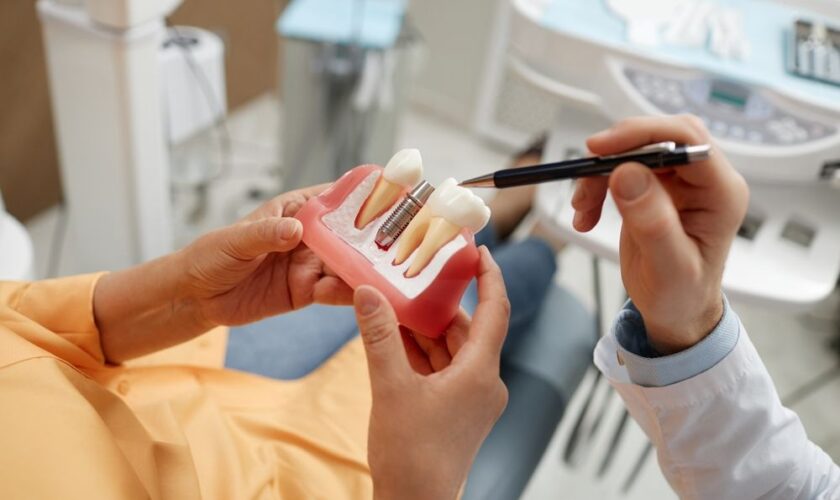Urinary tract infections (UTIs) are often thought of as a condition that primarily affects women. However, men can also develop UTIs, and in fact, they can be more serious when they occur in men due to the anatomy of the male urinary system. Understanding the symptoms of a UTI, how they can be prevented, and the best treatment options available is important for maintaining good urological health.
In this blog post, we will explore what UTIs are, why they happen in men, how to recognize the symptoms, and how a urologist can help manage and treat this common condition.
What is a Urinary Tract Infection (UTI)?
A urinary tract infection (UTI) is an infection that affects any part of the urinary system, which includes the kidneys, bladder, urethra, and ureters. The most common type of UTI is a bladder infection, known as cystitis, but UTIs can affect the kidneys (pyelonephritis) or the urethra (urethritis) as well.
The infection typically occurs when bacteria, most often Escherichia coli (E. coli), enter the urinary tract and begin to multiply. In healthy individuals, the body’s immune system and the flushing action of urination help keep these bacteria in check. However, when bacteria overpower the system, an infection can develop.
How Are UTIs Different in Men?
UTIs are less common in men than women, but when they do occur, they can be more complicated. Men have a longer urethra, which means that bacteria have a greater distance to travel to reach the bladder. Additionally, UTIs in men are often associated with an underlying medical issue, such as an enlarged prostate, urinary retention, or diabetes. As men age, they are at an increased risk of developing UTIs due to these factors.
Some factors that can increase the risk of UTIs in men include:
- Enlarged prostate (Benign Prostatic Hyperplasia or BPH): An enlarged prostate can obstruct the flow of urine, causing urine to remain in the bladder longer and allowing bacteria to grow.
- Urinary catheter use: Men who use urinary catheters are at a higher risk of developing UTIs, as catheters can introduce bacteria directly into the urinary tract.
- Diabetes: High blood sugar levels can make it easier for bacteria to grow in the urinary tract.
- Weakened immune system: Conditions that weaken the immune system, such as HIV/AIDS or certain medications, can make men more susceptible to UTIs.
- Sexual activity: Although less common in men, sexual activity can sometimes lead to the introduction of bacteria into the urethra.
Symptoms of UTIs in Men
Recognizing the symptoms of a UTI in men is key to seeking prompt treatment and preventing the infection from spreading to the kidneys. Some common symptoms of a UTI include:
- Painful or burning sensation during urination (dysuria)
- Frequent urination or the feeling of needing to urinate, even after the bladder is empty
- Cloudy or foul-smelling urine
- Blood in the urine (hematuria)
- Pelvic or lower abdominal pain
- Pain in the lower back or sides (if the infection has spread to the kidneys)
- Fever or chills (which can indicate a more serious infection affecting the kidneys)
It’s important to note that UTIs can sometimes go unnoticed in the early stages, especially if the symptoms are mild or mistaken for another condition. If left untreated, a UTI can lead to more serious complications, including kidney infections or sepsis, a life-threatening infection that can spread throughout the body.
How a Urologist Can Help with UTI Diagnosis and Treatment
If you experience symptoms of a UTI, it’s important to see a urologist as soon as possible for diagnosis and treatment. A urologist specializes in disorders of the urinary system and can provide targeted treatment to address the infection and its underlying causes.
Diagnosis: To diagnose a UTI, your urologist will typically perform a physical examination and ask about your medical history and symptoms. A urine sample will also be collected to test for the presence of bacteria, white blood cells, and red blood cells. In some cases, your urologist may recommend additional tests, such as an ultrasound, CT scan, or cystoscopy, to rule out underlying conditions, such as an enlarged prostate or kidney stones, which could be contributing to the infection.
Treatment: UTIs in men are typically treated with antibiotics to eliminate the bacteria causing the infection. The specific type of antibiotic prescribed will depend on the bacteria identified in the urine sample. It’s crucial to complete the full course of antibiotics, even if symptoms improve, to ensure the infection is fully cleared.
In addition to antibiotics, your urologist may recommend the following to help manage and prevent UTIs:
- Pain Relief: Over-the-counter pain relievers, such as ibuprofen or acetaminophen, can help alleviate pain and reduce fever associated with a UTI.
- Increased Fluid Intake: Drinking plenty of fluids, especially water, helps flush bacteria out of the urinary tract and prevents dehydration. Your urologist may also recommend cranberry juice or supplements, though their effectiveness in preventing UTIs is debated.
- Management of Underlying Conditions: If an underlying condition, such as an enlarged prostate or diabetes, is contributing to recurrent UTIs, your urologist will work with you to manage these conditions. This may include medication, lifestyle changes, or surgical options, depending on the severity of the issue.
- Urinary Tract Care: If you are using a urinary catheter or have other medical devices, your urologist will advise you on proper hygiene practices and maintenance to reduce the risk of infection.
Preventing UTIs in Men
While UTIs can happen to anyone, there are steps you can take to reduce your risk of developing an infection:
- Practice good hygiene: Wipe from front to back after using the restroom, and keep the genital area clean and dry.
- Drink plenty of water: Staying hydrated helps flush bacteria from the urinary tract and prevents dehydration, which can make it easier for bacteria to thrive.
- Urinate regularly: Don’t hold in urine for extended periods, as this can increase the risk of bacterial growth.
- Avoid irritants: Avoid using harsh soaps, douches, or other products that can irritate the urethra.
- Manage underlying conditions: If you have diabetes, an enlarged prostate, or any other health condition that increases the risk of UTIs, work with your healthcare provider to manage these conditions effectively.
For men who experience frequent UTIs, your urologist may recommend additional preventive measures, such as long-term low-dose antibiotics or lifestyle changes.
When to See a Urologist
If you experience any of the symptoms of a UTI, especially if you have a fever, chills, or back pain, it’s important to consult with a urologist promptly. UTIs can lead to more serious complications if left untreated, including kidney infections or sepsis. Additionally, if you experience recurrent UTIs, a urologist can help identify underlying causes and develop a plan for prevention.
Conclusion
Urinary tract infections may be less common in men than women, but they are still a significant health concern. Recognizing the symptoms of a UTI early and seeking treatment from a urologist can help prevent the infection from spreading and causing further complications. With appropriate care and lifestyle modifications, UTIs can be managed effectively, allowing men to maintain their health and quality of life.
If you suspect you have a UTI or experience recurrent infections, don’t hesitate to consult with a urologist for expert guidance and care. We recommend urologist brooklyn.











